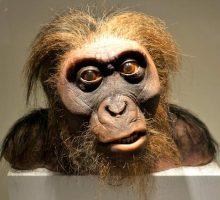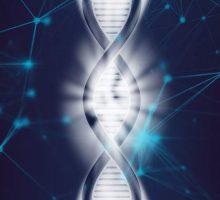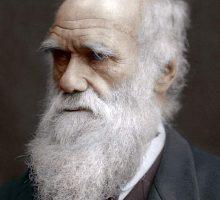- The basics of Darwin’s theory of evolution: An overview of natural selection and its role in the development of species.
- Evidence for evolution: How scientists have gathered evidence to support Darwin’s theory.
- The controversy surrounding evolution: Why some people reject the theory of evolution and how it has impacted society.
- The role of mutations in evolution: How mutations create genetic diversity and drive evolutionary change.
- Darwin’s impact on modern biology: How Darwin’s ideas have influenced the field of biology and shaped our understanding of the natural world.
- Evolution and the fossil record: An exploration of the fossil record and what it tells us about the history of life on Earth.
- Adaptation and evolution: How organisms adapt to their environment and how that drives evolutionary change.
- Evolution and human origins: How humans evolved from earlier hominids and what that tells us about our place in the natural world.
- The social and cultural implications of evolution: How Darwin’s theory has influenced social and cultural attitudes toward race, gender, and other issues.
- The future of evolution: What the study of evolution can tell us about the future of life on Earth and the potential for new species to emerge.
The basics of Darwin’s theory of evolution
Darwin’s theory of evolution is one of the most influential scientific theories of all time. At its core is the concept of natural selection, which describes how species evolve and adapt over time. Natural selection is driven by the environment, which creates selective pressures that favor certain traits over others.
The basic idea of natural selection is that individuals with advantageous traits are more likely to survive and reproduce than those without those traits. Over time, these advantageous traits become more common in the population, leading to evolutionary change. This process can result in the development of new species, as populations become genetically distinct from one another.
One of the key features of natural selection is that it is a gradual process that occurs over many generations. Small changes accumulate over time, leading to significant changes in the traits of a population. This is why evolution is often referred to as a “slow and steady” process.
Another important aspect of Darwin’s theory is the concept of variation. Every individual within a population is unique, and this variation is what allows natural selection to occur. If everyone in a population had the same traits, there would be no selection pressure and no evolution.
Darwin’s theory of evolution has been supported by a wealth of evidence, including the fossil record, comparative anatomy, and molecular biology. It has also been tested and refined over time, as new discoveries have challenged and expanded our understanding of the natural world.
Evidence for evolution
Darwin’s theory of evolution has been one of the most influential ideas in science, but it’s not just a theoretical concept. There is a wealth of evidence that supports the idea of evolution and the role of natural selection in the development of species. In this blog post, we’ll explore some of the key pieces of evidence that have been gathered over the years to support Darwin’s theory.
The fossil record is one of the most compelling lines of evidence for evolution. Fossils are the preserved remains of organisms that lived long ago, and they provide a window into the history of life on Earth. By studying the fossil record, scientists have been able to trace the evolution of different species over time, and to identify key transitional forms that show how one species gave rise to another.
Comparative anatomy is another important source of evidence for evolution. By comparing the structures of different organisms, scientists can identify similarities and differences that suggest common ancestry. For example, the forelimbs of humans, whales, bats, and birds are all built on the same basic plan, despite their very different functions.
Molecular biology has also provided important evidence for evolution. By comparing the DNA of different organisms, scientists can trace their evolutionary relationships and identify shared genetic features that suggest common ancestry. This has allowed us to reconstruct the evolutionary history of many different groups of organisms, from bacteria to primates.
Observations of natural selection in action also provide compelling evidence for evolution. For example, studies of finch populations on the Galapagos Islands have shown how changes in beak size and shape can lead to the development of new species over time.
The controversy surrounding evolution
Darwin’s theory of evolution has been widely accepted by the scientific community, but it has also been the subject of controversy since its inception. Despite overwhelming evidence in support of evolution, there are still people who reject the theory and cling to alternative explanations for the origin of species. In this blog post, we’ll explore the reasons why some people reject evolution and how this controversy has impacted society.
One of the primary reasons why some people reject evolution is religious belief. For many people, the idea of humans evolving from other primates contradicts their belief in divine creation. Some religious groups have even gone so far as to advocate for the teaching of alternative creationist theories in schools, which has led to legal battles over the separation of church and state.
Another reason why some people reject evolution is a lack of understanding or education about the science behind the theory. Misconceptions and misinformation about evolution are still prevalent in some parts of society, leading to confusion and skepticism about the validity of the theory.
The controversy surrounding evolution has also had a significant impact on science education and public policy. In some areas, attempts to teach creationist theories in public schools have led to a weakening of science education and a lack of critical thinking skills among students. This can have far-reaching consequences, as scientific literacy is essential for making informed decisions about issues like public health and the environment.
Despite these challenges, there has been progress in recent years in promoting acceptance of evolution. Scientific organizations and educators have worked to improve science education and dispel misconceptions about evolution. Some religious groups have also embraced the idea of evolution and see it as compatible with their beliefs.
The role of mutations in evolution
Mutations are a fundamental component of evolution, as they provide the raw material for genetic variation upon which natural selection acts. In this blog post, we’ll explore the role of mutations in creating genetic diversity and driving evolutionary change.
At its core, evolution is driven by changes in the frequency of genes within a population over time. Mutations are the ultimate source of these genetic changes, as they create new variants of genes that can be passed down from one generation to the next. When these variants are beneficial to an organism’s survival and reproduction, they are more likely to be passed on to future generations through natural selection.
Mutations can occur in many different ways, such as errors in DNA replication, exposure to radiation or chemicals, or through the action of transposable elements. While most mutations are neutral or harmful, some can be beneficial, providing organisms with new adaptations that allow them to survive and reproduce more effectively in their environment.
Over time, the accumulation of beneficial mutations can lead to the evolution of new traits and the emergence of new species. For example, the evolution of antibiotic resistance in bacteria is driven by the accumulation of mutations that allow them to survive exposure to antibiotics. Similarly, the evolution of color vision in primates was driven by the accumulation of mutations that allowed for the detection of different wavelengths of light.
While mutations provide the raw material for evolutionary change, it is important to note that they do not act alone. Natural selection is the process by which beneficial mutations are favored over time, leading to the spread of these advantageous traits within a population. Other factors, such as genetic drift and gene flow, can also play a role in shaping the genetic makeup of populations over time.
Darwin’s impact on modern biology
Charles Darwin’s theory of evolution by natural selection is one of the most important scientific ideas in history, and its impact on modern biology cannot be overstated. In this blog post, we’ll explore how Darwin’s ideas have influenced the field of biology and shaped our understanding of the natural world.
Darwin’s theory of evolution revolutionized the way we think about the diversity of life on Earth. Prior to Darwin, many people believed that each species had been created separately by a divine creator and remained unchanged over time. Darwin’s observations of the natural world challenged this view, showing that species were not fixed entities, but rather evolved over time in response to environmental pressures.
Darwin’s ideas provided a unifying framework for understanding the diversity of life on Earth, and helped to explain many previously unexplained phenomena in biology. For example, Darwin’s theory helped to explain the distribution of species around the world, as well as the patterns of similarity and difference between different groups of organisms.
Today, Darwin’s ideas continue to shape our understanding of the natural world. The field of evolutionary biology has expanded to include a wide range of topics, from the molecular mechanisms of genetic variation to the evolution of complex behaviors and social systems.
Darwin’s legacy also extends beyond biology to influence many other areas of science, from geology and paleontology to anthropology and psychology. Darwin’s ideas about evolution and natural selection have become a fundamental part of our understanding of the natural world, and continue to inspire new discoveries and insights into the diversity of life on Earth.
Evolution and the fossil record
The fossil record provides a rich source of information about the history of life on Earth, and is one of the most important lines of evidence supporting the theory of evolution. In this blog post, we’ll explore the fossil record and what it tells us about the history of life on Earth.
Fossils are the preserved remains or traces of organisms from the past, and can include everything from bones and teeth to footprints and imprints of soft tissues. Fossils are found in rocks of different ages, and can provide a window into the past that extends back millions of years.
By studying the fossil record, scientists can learn about the evolution of life on Earth, including the appearance of new species, the extinction of old ones, and the gradual changes in the characteristics of different groups of organisms over time. For example, the fossil record shows that the first complex organisms, such as animals and plants, evolved around 500 million years ago, and that the appearance of new body plans and adaptations was often associated with major environmental changes.
One of the most famous examples of evolutionary change in the fossil record is the evolution of the horse. Fossil evidence shows that the first horses were small, browsing animals with multiple toes, and that over time, they evolved larger size, a single toe, and adaptations for running. This pattern of gradual change over time is consistent with the predictions of evolutionary theory, and provides compelling evidence for the reality of biological evolution.
While the fossil record is an important source of information about the history of life on Earth, it is important to note that it is not complete. Many organisms did not fossilize, and others may have fossilized but have not yet been discovered. Additionally, the fossil record is biased towards organisms with hard parts, such as bones and shells, which are more likely to be preserved than soft tissues.
Adaptation and evolution
Adaptation is a key process that drives evolution, allowing organisms to survive and reproduce in their environments. In this blog post, we’ll explore how organisms adapt to their environment, and how adaptation drives evolutionary change.
Adaptation refers to the process by which organisms change in response to environmental pressures. These pressures can include things like changes in temperature, predation, competition for resources, or the availability of food. Organisms that are better adapted to their environment are more likely to survive and reproduce, passing their advantageous traits on to their offspring.
Adaptation can take many forms, from changes in physical structures, like the evolution of wings in birds, to changes in behavior, like the ability of certain animals to camouflage themselves to avoid predators. Adaptation can also occur at the genetic level, as organisms acquire new mutations that provide them with advantageous traits.
Over time, the accumulation of adaptations can lead to evolutionary change, as populations of organisms become better adapted to their environments. This process can lead to the formation of new species, as populations become reproductively isolated from one another and diverge genetically.
One classic example of adaptation and evolution is the case of the peppered moth in England. Prior to the Industrial Revolution, the peppered moth had a light-colored, speckled appearance that helped it blend in with lichen-covered trees. However, as industrial pollution darkened the tree trunks, a new, dark-colored form of the moth became more common, as it was better adapted to its new environment. This example shows how adaptation can drive evolutionary change, as organisms with advantageous traits become more common over time.
Evolution and human origins
Human evolution is a fascinating topic that sheds light on our origins and our place in the natural world. In this blog post, we’ll explore how humans evolved from earlier hominids and what that tells us about our evolutionary history.
The fossil record shows that humans evolved from a group of primates known as hominids, which first appeared in Africa around 7 million years ago. Over time, these hominids evolved different characteristics, such as bipedalism (walking on two legs) and larger brains, that eventually led to the emergence of the genus Homo, which includes modern humans.
One of the most famous early hominids is Australopithecus afarensis, which lived around 3-4 million years ago and is best known from the famous fossil “Lucy.” These early hominids had a mixture of ape-like and human-like features, including a small brain, but bipedalism and the ability to use tools.
Over time, the genus Homo evolved larger brains and more sophisticated tool use. One of the earliest members of the genus Homo is Homo habilis, which lived around 2.8-1.5 million years ago and was the first hominid to use stone tools. Later members of the genus Homo, such as Homo erectus and Homo neanderthalensis, were even more advanced, with larger brains and complex cultural behaviors.
The emergence of modern humans, Homo sapiens, is thought to have occurred around 300,000 years ago, although the exact timing and circumstances of this transition are still the subject of much debate. Modern humans have larger brains and more complex cultural and social behaviors than any other hominid species, and have spread across the globe to inhabit virtually every environment on Earth.
Understanding our evolutionary history is important for understanding our place in the natural world and for appreciating the diversity of life on Earth. It also helps us to understand the complex interactions between biology, culture, and environment that have shaped our evolution.
The social and cultural implications of evolution
Darwin’s theory of evolution has had profound impacts on the way we understand ourselves and our place in the natural world. However, it has also had significant social and cultural implications, shaping attitudes toward race, gender, and other issues.
One of the most controversial aspects of evolution has been its impact on racial attitudes. In the late 19th and early 20th centuries, many scientists used Darwin’s theory to argue that some races were inherently superior to others, leading to the rise of eugenics and other racist ideologies. These ideas were used to justify discrimination and oppression against people of color, and even the forced sterilization of individuals deemed “unfit” to reproduce.
Similarly, Darwin’s theory has also been used to justify sexist attitudes toward women. In the late 19th century, many scientists argued that women were inherently inferior to men, based on the idea that men were more “evolved” than women. This idea was used to deny women access to education, voting rights, and other opportunities, and to promote the idea of women as submissive and inferior to men.
Despite these negative impacts, however, Darwin’s theory has also been used to challenge oppressive attitudes and promote social justice. In the mid-20th century, for example, scientists such as Theodosius Dobzhansky used evolutionary theory to argue against racist ideologies, promoting the idea that all humans are part of a single species and should be treated equally.
Similarly, evolutionary theory has also been used to challenge sexist attitudes and promote gender equality. For example, feminist scientists such as Sarah Hrdy have used evolutionary theory to argue that women’s roles in reproduction and child-rearing have been undervalued, and that women have played a critical role in shaping human evolution.
The future of evolution
The study of evolution has given us a deeper understanding of the history of life on Earth, but it also offers insight into the future of life on our planet. As we continue to study the mechanisms of evolution, we can make predictions about what kinds of new species might emerge in the coming years and centuries.
One of the key factors driving the evolution of new species is genetic drift, which refers to the random fluctuations in gene frequencies that can occur in small populations. Over time, these fluctuations can lead to the accumulation of genetic differences between populations, eventually resulting in the formation of new species.
Another important factor in the evolution of new species is natural selection. As environments change, species that are better adapted to these new conditions are more likely to survive and reproduce, passing on their advantageous traits to future generations. This process can lead to the emergence of new species that are better suited to their environments than their ancestors were.
In recent years, human activity has had a profound impact on the evolution of many species, both through direct interventions such as selective breeding and genetic engineering, and through indirect impacts such as habitat destruction and climate change. As we continue to alter the environment around us, it is likely that we will continue to drive the evolution of new species, some of which may be better adapted to thrive in the altered landscapes we create.
Looking further into the future, some scientists speculate that we may one day be able to intentionally guide the evolution of new species, using tools such as genetic engineering and artificial selection to create organisms that are better suited to particular tasks or environments. This raises a host of ethical questions about the role of humans in shaping the natural world, and the potential risks and benefits of intentionally engineering new forms of life.






